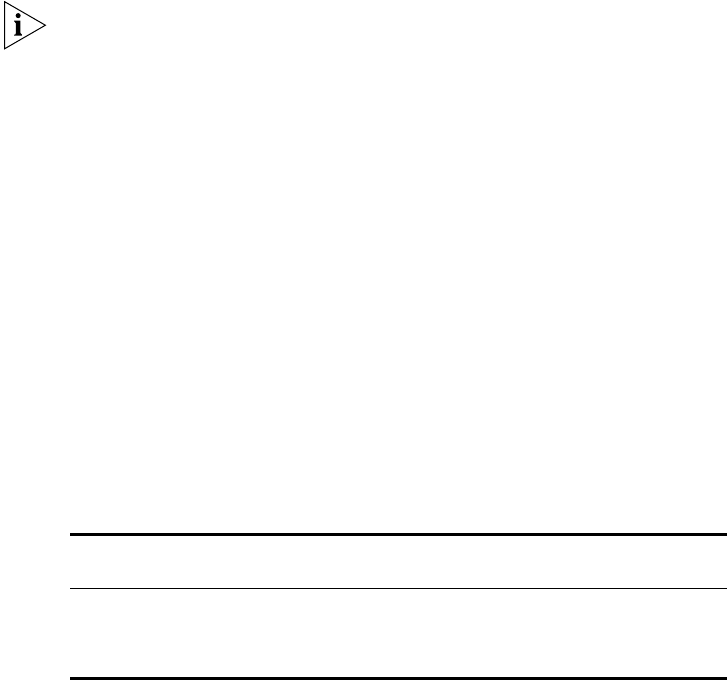
IP Addresses
87
Dotted Decimal Notation
The actual IP address is a 32-bit number that is stored in binary format.
These 32 bits are segmented into 4 groups of 8 bits — each group is
referred to as a
field
or an
octet
. Decimal notation converts the value of
each field into a decimal number, and the fields are separated by dots.
Figure 27
Dotted Decimal Notation for IP Addresses
The decimal value of an octet whose bits are all 1s is 255.
Network Portion
The location of the boundary between the network part and the host
part depends on the class that the central agency assigns to your
network. The three primary classes of IP addresses are as follows:
■
Class A address
— Uses 8 bits for the network part and 24 bits for
the host part. Although only a few Class A networks can be created,
each can contain a very large number of hosts.
■
Class B address
— Uses 16 bits for the network part and 16 bits for
the host part.
■
Class C address
— Uses 24 bits for the network part and 8 bits for
the host part. Each Class C network can contain only 254 hosts, but
many such networks can be created.
The high-order bits of the network part of the address designate the IP
network class. See Table 8.
Table 8
How Address Class Corresponds to the Address Number
Address Class High-order Bits
Address Number
(Decimal)
A 0nnnnnnn 0-127
B 10nnnnnn 128-191
C 11nnnnnn 192-254
158.101.10.32
10011110.01100101.00001010.00100000 = Binary notation
= Decimal notation


















